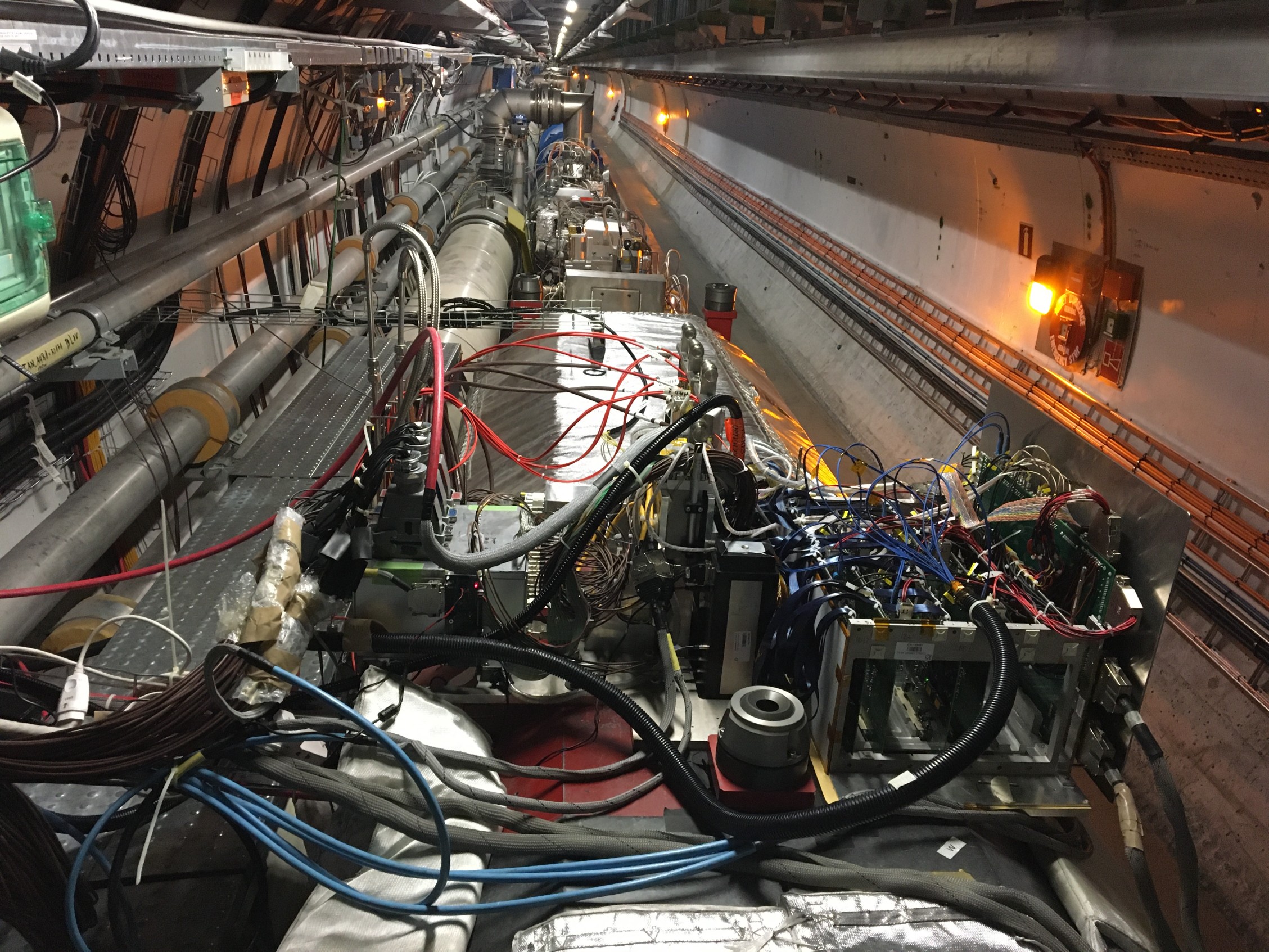Millions of cosmic rays bombard the Earth’s atmosphere every second. These are naturally-occurring particles from outer space, which are extremely difficult to detect and measure. When they collide with nuclei in the upper atmosphere, these so-called primary cosmic rays produce showers of secondary cosmic rays that go on to reach the ground. The Large Hadron Collider forward (LHCf) experiment, one of the smallest of the LHC experiments, was set up to thoroughly investigate these elusive particles when LHC operation first began. This week, it resumed its studies of the properties of cosmic rays, in a five-day data-taking run, following the completion of upgrades to the detector during the second long shutdown of the machine.
“When page one of the LHC showed that the LHC was being filled for the LHCf data taking, we were very excited,” says Oscar Adriani, deputy spokesperson for LHCf.
This is LHCf’s first data-taking run at the LHC’s record collision energy of 13.6 TeV. The run also coincided with the record time that the LHC has been able to keep a fill without restarting, namely a total period of 57 hours. Running for longer means more efficient periods of data-taking for the experiments.
Primary cosmic rays can have very high energies – above 1017 eV – similar to those of the high-energy collisions that are produced in the LHC. Located 140 m from the ATLAS collision point of the LHC and measuring only 20cm by 40cm by 10cm, LHCf analyses neutral particles that have been thrown forward by collisions, mimicking the production of secondary cosmic rays in the Earth’s atmosphere. The experiment is able to analyse neutral particles because they are not deflected by the LHC’s strong magnetic field, and can measure their properties with extremely high precision.
This five-day run is likely to be the final LHCf run involving proton-proton collisions, because in the next data-taking period of Run 3 the collaboration hopes to study proton-oxygen collisions that better emulate the interaction of primary cosmic rays with the Earth’s atmosphere.
With the higher energy and higher statistics that Run 3 provides, LHCf is particularly looking out for particles called neutral kaons and neutral eta mesons. These are made up of a quark and an antiquark pair, including a strange quark. “The models that predict interaction with the atmosphere predict a certain number of secondary muons, but there is a mismatch between the expected and the detected numbers of muons,” explains Adriani. “By measuring the strange component produced at the LHC, we may be able to solve this muon puzzle.”
The LHC, with its high energy and controlled environment, provides the perfect place to simulate and study the hadronic interactions of cosmic rays. “High energy cosmic rays are still a mystery. They are very difficult to measure. You need huge detectors, and you cannot perform direct measurements while they are in orbit because the flux is too small,” continues Adriani. “So, LHCf is really the only experiment in the world that can shed some light on these interactions at very, very high energy. This is a critical element for cosmic ray physicists.”
The LHCf collaboration is very thankful to the ATLAS run coordination team for their continued collaboration and support.

